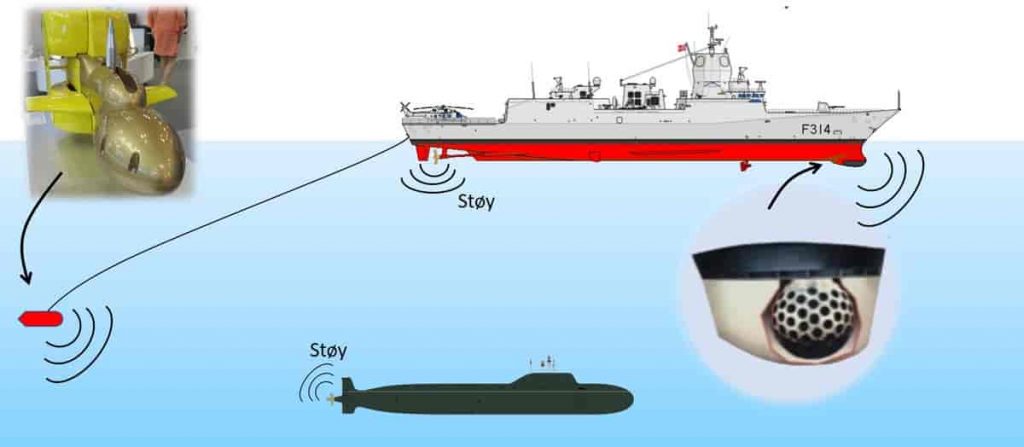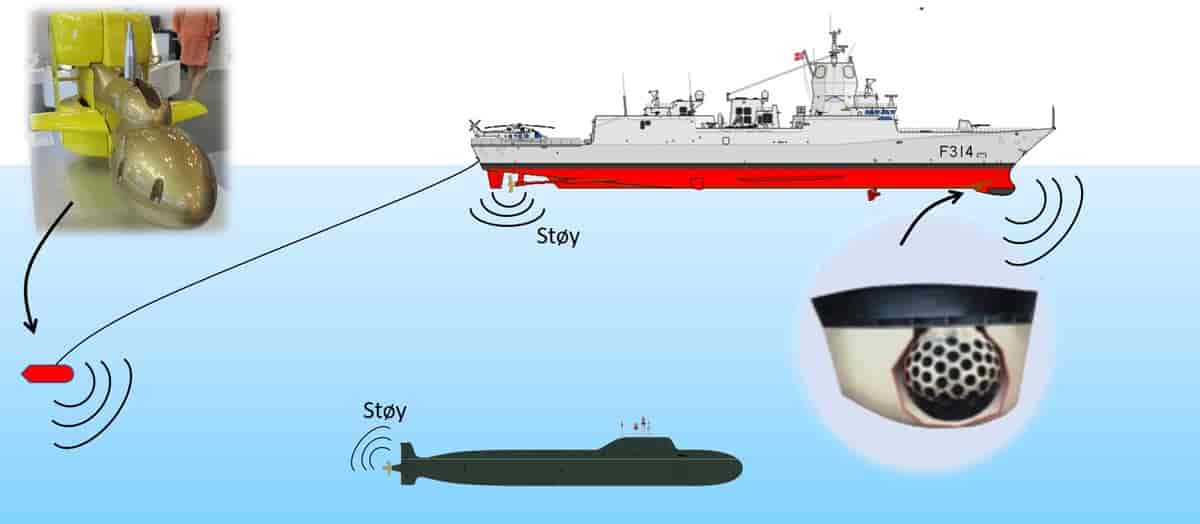
In a statement Britain said, its frigate HMS Northumberland which had collided with an unidentified Russian submarine at the end of 2020, may have been the result of an attempted to hijack its sonar.
The statement by the British Ministry of Defense places the incident in the North Atlantic when during a routine patrol by Type 23 HMS Northumberland frigate at the Arctic Circle between the coast of Norway and Iceland.
Incidentally, this passage is also routinely patrolled by Russian submarines.
During on such patrol when the British frigate followed a Russian submarine, and suddenly the contact broke off. The British frigate thought that this happened because the Russian submarine may have submerged. It then decided to use its sonar systems to track it.
The most effective solution for this type of mission in frigates is the 2087 type passive-active towed sonar. It works at very low frequencies, so it is an ideal means of detecting the latest generation of submarines. The efficiency of passive-active towed sonars is greater since the antenna system is towed far behind the frigate, eliminating the frigate’s “own” interference; further it can also be submerged to a depth optimal for the given hydrological conditions and the tactics adopted by the tracked submarine.
During on such tracking operation, the entire antenna system collided with an unidentified underwater object. It is highly probable that it may have been a Russian submarine whose periscope had been tracked a moment earlier by the British Marlin-type ZOP helicopter.
Interestingly, the whole event was filmed since the crew of Britain’s Channel 5 channel was onboard the frigate documenting for a TV series called “Life at Sea”.
The collision was also recorded by others and included comments from the crew saying, “What the hell was that?” return to base to replace the sonar antenna system.
Note, that the word “replace” could potentially indicate that the entire antenna has been retrieved.
Clearly, the British does not want to admit on record the loss of an entire antenna, and the possibility of its being taken over by the Russians.
Following the incident, the British navy said, the incident did not happen intentionally, but by accident.
It is plausible that Moscow may have cut the British sonar antenna on purpose, just like the British did during the Falkland War.
In 1982, the submarine, HMS Conqueror Valiant, “stole” a Soviet sonar towed in the Barents Sea in a covert operation code-named Barmaid.
Incidentally, the Russian towed sonar was linear, and not active-passive, resembling a rope stretching several hundred meters.
The British 2087 was in comparison more difficult to “hijack” since it has a more massive active block, a heavy module several meters high. Further, the British Navy has also claimed that they have managed to recover their antenna system, which incidentally was heavily “scarred”.
Of note, the Russian submarine, which may have taken part in the collision, did not hide its presence, and had initially sailed on the surface, so it could not have any additional equipment on board. HMS Conqueror, in turn, for its mission in 1982 the year was properly prepared in advance. For the “hijack” of the Soviet sonar, it was equipped with, among others, a pair of remote-controlled, heavy, steel cutting blades [provided by the Americans] and a set of underwater television cameras, allowing the monitoring of the entire operation from inside the ship. therefore HMS Conqueror ran underwater all the time.
At that time, the British were interested in getting their hands on the new Soviet linear towed sonar since it was supposed to be the secret weapon of the Soviet Union which could supposedly search and fight NATO submarines at great distances.
The new Soviet linear towed sonar was so sensitive that to avoid being disturbed by its engines, it had to be towed several hundred meters from the mother ship. This provided the British a chance to get between the linear antenna system and the Mother ship towing it and cut the cable line that kept the system at the right distance and depth; the towed sonar also provided real-time information from the submerged antenna.
The task of cutting the cable was difficult not only because it required precise underwater maneuvering, but also because of the very principle of linear sonar operation – a passive device making it difficult to locate. The British had to also find the Mother ship towing the passive sonar and had to cut it without being detected. The operation became more interesting since, according to the British, the Mother ship was sailing under a Polish flag.
Despite these Himalayan difficulties, a British submarine managed to find the Soviet reconnaissance vessel, the Mother ship, and was even able to locate the antenna system that it was towing. The operation became even more difficult since the cameras mounted on the HMS Conqueror turned out to be completely useless since nothing could be seen through them.
Using mathematical calculations, the British not only found the cable but were able to cut it off and hold it with a second pair of pliers; they had to do it just a few meters away from the towing antenna system, in such a way that it looked like an accidental break.
Incidentally, the entire operation was probably carried out in Soviet territorial waters.
The British not only avoided being detected but also managed to place a cut antenna onboard their unit with the use of divers.
HMS Conqueror returned to its home base in Faslane, Scotland.
The entire Soviet antenna system was packed into a plane and sent to the United States for research.





